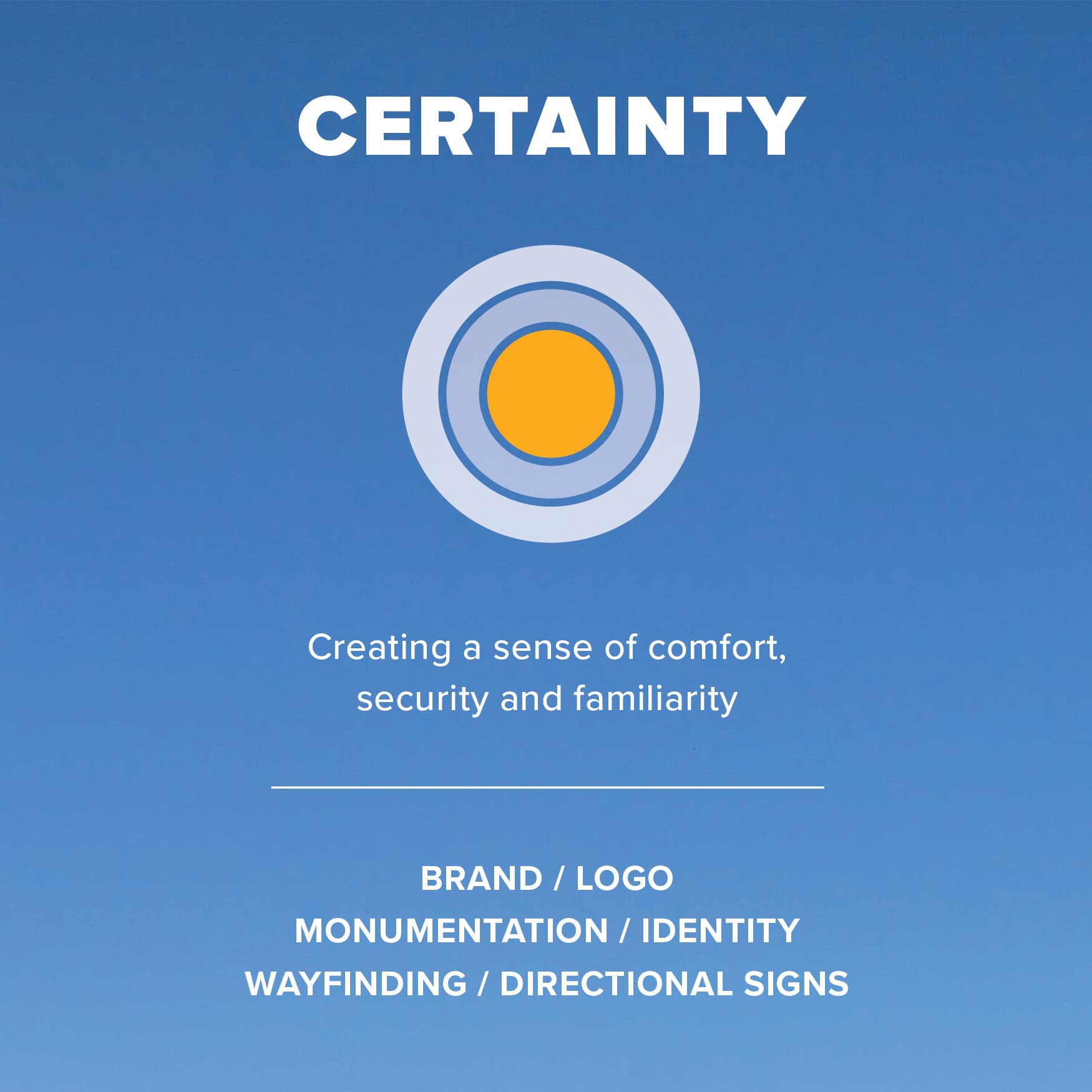September 21, 2020
Certainty Variety Delight · Part 4 of 4

September 21, 2020

Human Motivation in Design
Abraham Maslow is best known for his 1943 paper, “A Theory of Human Motivation,” where he establishes and outlines the five basic human needs. At the bottom of the famous pyramid are the physiological needs, the most basic necessities for human life—food, water, air, shelter, and clothing, to name a few. This is followed by the need for safety, then the need for love and belonging, then esteem (self-respect and feeling respected by others), and at the very top of the hierarchy is the need for self-actualization.
It’s important to take all of these human needs into consideration when designing, because they are fundamental principles that connect people to places they will feel comfortable and fulfilled, and ultimately want to spend time in again and again. As part of our design process at RSM Design, we have reinterpreted Maslow’s Hierarchy of Needs to fit seamlessly into the design of a place. We call it “Certainty, Variety, Delight,” and we concentrate on these three elements to simplify and focus our design intent for every project to create a rich, layered experience rooted in human needs.

Certainty
Nobody likes feeling lost or not knowing what to do in unfamiliar situations. Certainty taps into this idea, that when you are going to a new place, you should be provided ample direction to be confident in your ability to navigate the space. This is the foundation of the pyramid, providing people with the right information, at the right time.


Variety
The paradox at the core of this need for certainty is that too much comfort and too much security can create a sense of predictability and boredom. People stop engaging with their surroundings and instead move blindly through the space between their destinations.
Variety provides that little change of pace, just enough difference to keep you in the moment and create an awareness of the details of their surroundings. It breaks the rhythm of a place and allows for moments of exploration, curiosity, and learning.


Delight
Creating the moments of delight is one of the most challenging parts of the design process. To truly be delightful, the moment can’t feel forced or contrived; it must occur naturally and organically, and above all, it must make people happy. These are the moments that show the true personality, culture, and history of a project, and the moments that turn into memories.


READ PART 1: EXPERIENTIAL DESIGN